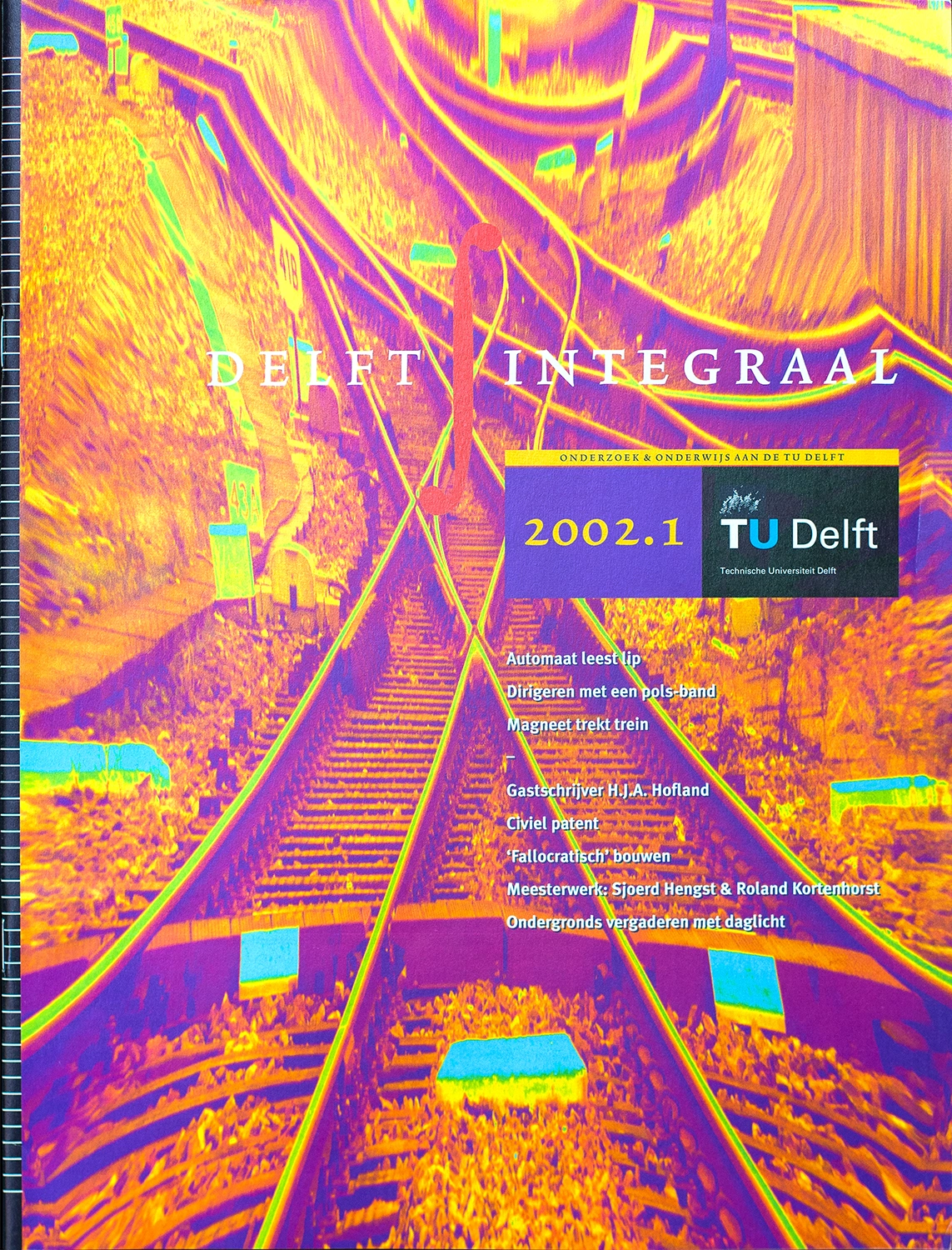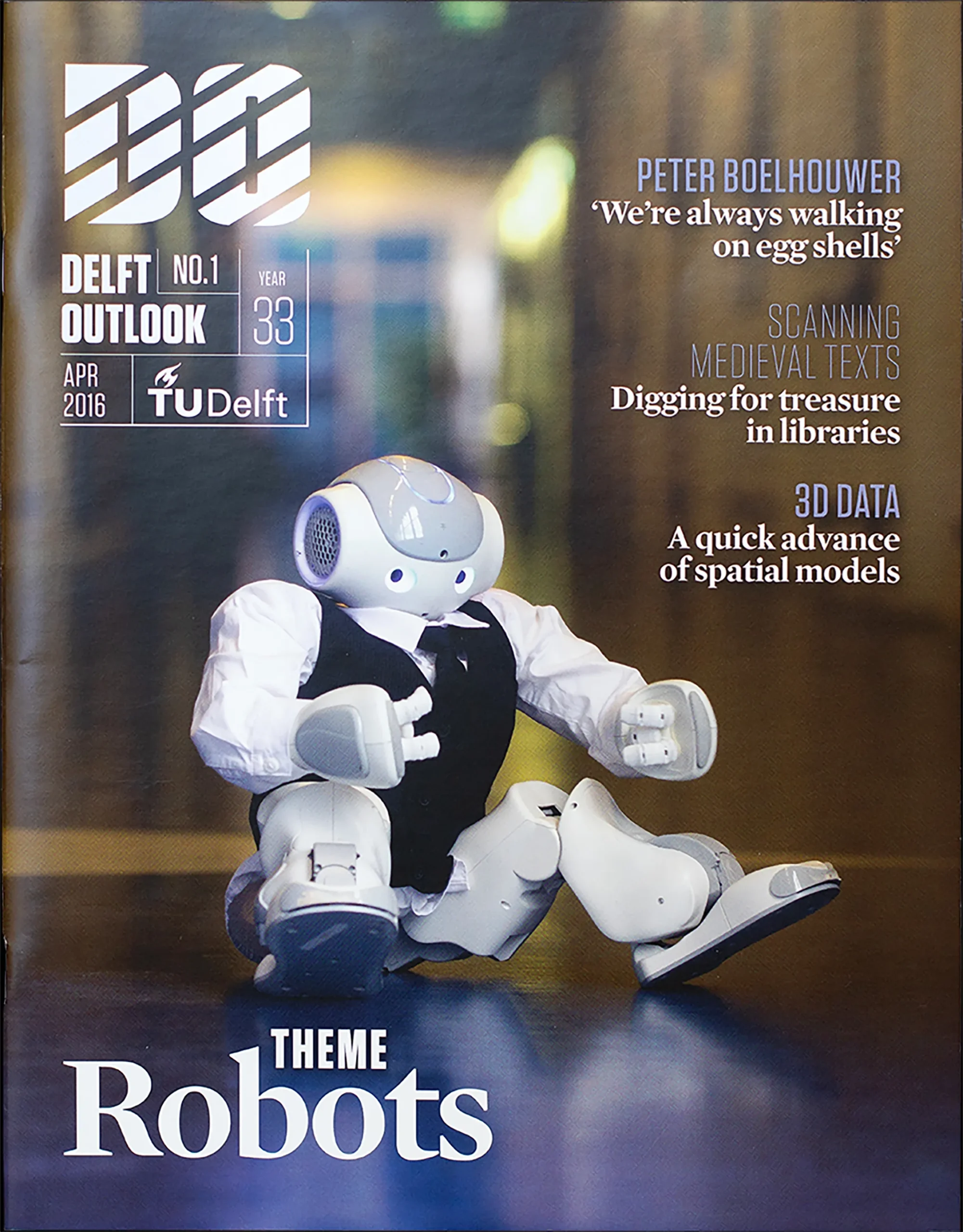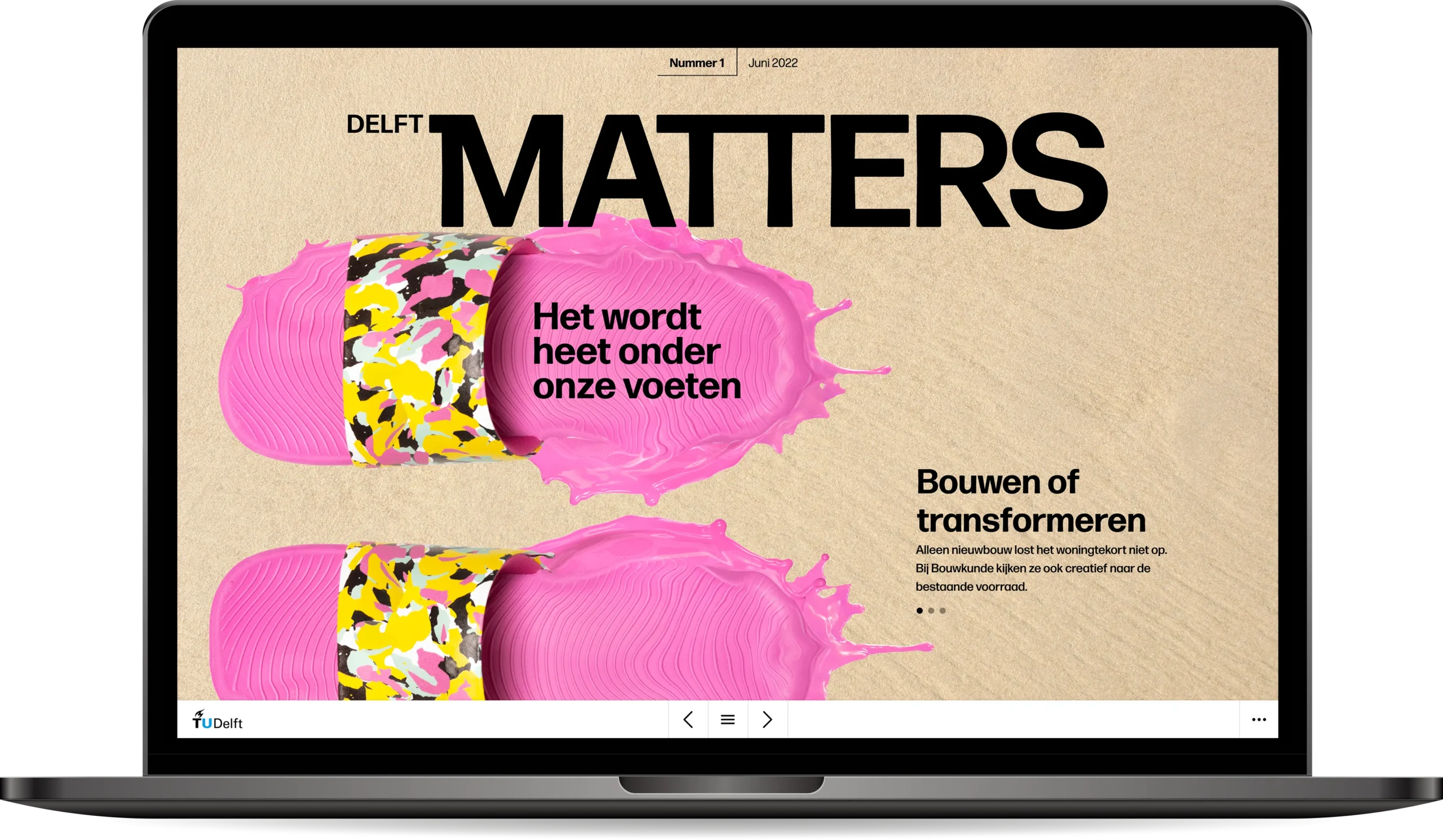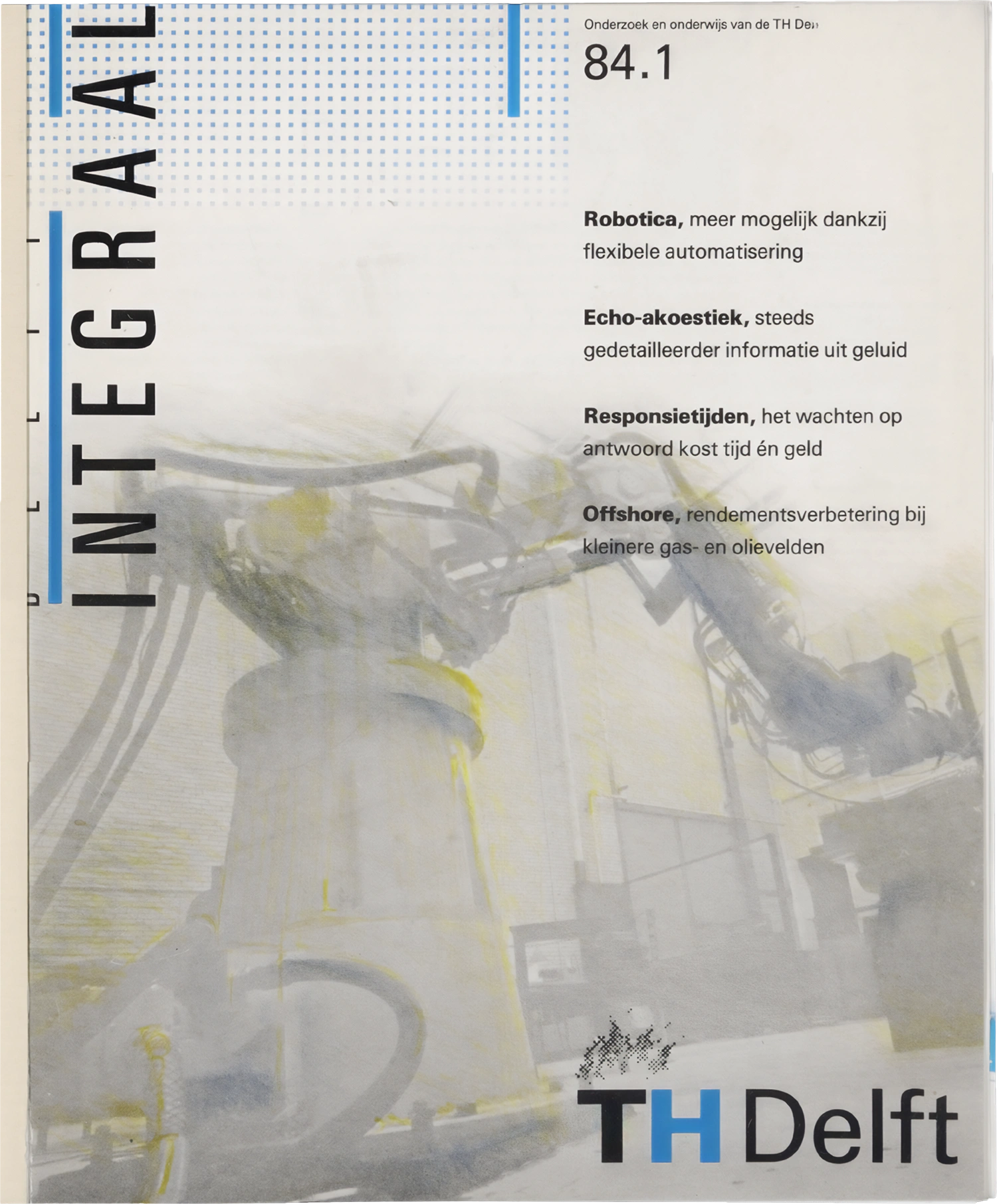
After a restyling the integral symbol appeared on the cover.
Reader questions
A price was even printed on the cover, but no one ever paid for a copy
Parallel to Delft Integraal, an Englishlanguage version was also published starting in 1985: Delft Outlook. This magazine was distributed through Dutch embassies and consulates, among others, and positioned TU Delft globally as a high-quality institution.
In-depth analyses
In the late 1980s, Delft Integraal transformed into a science magazine under its editor-in-chief Philip Broos. Broos focused on in-depth analyses of research, believing that highly educated readers were looking for more than a superficial story. The journalistic process intensified: interviews with researchers became the basis for news articles, without direct involvement of the academic advisory council.
The content broadened in the early 1990s and in addition to background stories on technology and innovation, science information officer Wilma van Wezenbeek introduced the column Hora Est!, in which PhD candidates commented on remarkable or provocative statements. For example, electrical engineer Koert van der Lingen stated that ‘originality is a form of madness’ – which promptly instigated discussion (Delft Integral 96.2).
Articles regularly led to reactions from readers and were often picked up by other media outlets. One such example is the article on Zeppelins (Delft Integraal 94.2), based on a graduation project by Arjan van Timmeren, which received national media attention. Another high-profile example involved a press release on saddle soreness, which led to much unintentional hilarity during a live broadcast of the NOS Journaal presented by Harmen Siezen.

In 2014 the title Delft Integraal was abbreviated to DI. The magazine was given a thematic layout. The English version Delft Outlook was abbreviated to DO.
Robots – numerous but inflexible
A fully automated, human-free factory before the year 2000 and industrial robots that would take over the work of humans. The article Mechatronics, de integratie van machines en computers (Mechatronics, the integration of machines and computers) (Delft Integraal 1, 1984), offered readers a glimpse into a possible future.
Forty years later and those predictions have partly become reality, according to professor of biorobotics Martijn Wisse. Philips’ factories largely function without people but still require human supervision. “Robots cannot yet cope well with unexpected situations.” The number of industrial robots increased significantly, from 30,000 in 1984 to four million today worldwide. Their tasks – welding, spraying, assembly – have remained largely unchanged, although they are now also used in the packaging and food industries and in laboratories. Fears of mass unemployment due to robotisation proved unfounded. While some occupations disappeared, others have emerged. Wisse: “In fact, there will be a major labour shortage in sectors such as horticulture, construction and healthcare in the near future.”
RoboHouse
As in 1984, companies regularly approach TU Delft for advice. This has led to the establishment of RoboHouse, an intermediary between knowledge institutions and SMEs. It’s a place where companies, start-ups, scientists and students come together. Because the study of robotics has seen explosive growth. In 1984, only 120 students were taking a single course on this subject, now there are thousands across different faculties. Wisse: “There is even a master’s degree programme in robotics where students spend two years gaining proficiency in robotics and artificial intelligence.”
He believes that flexibility will be the biggest challenge for robots in the coming years. “They work efficiently in factories but human intervention is needed in less structured environments.” Artificial intelligence will change this in the future, he says. “Forty years from now, robots will be more autonomous and make more complex decisions – the impact of which we cannot yet foresee.”
Societal relevance
Starting in 2006, the format of Delft Integraal changed and the emphasis shifted from scientific depth to broader communication about TU Delft. In 2007, the editors of the journalistic university magazine Delta took over production and the editor-in-chief also assumed responsibility for Delft Integraal. The journalistic approach also changed and, instead of actively gathering scientific news, the editors were once again partly steered by the academic advisory council.
In 2014, the title Delft Integraal disappeared from the cover and was replaced by the logo DI (DO in the English version). The magazine became more thematic and was published four times a year, covering topics ranging from plastic and scarcity to resilience and the sea.
Another change took place in 2022 when Delft Integraal became Delft Matters and the number of issues was reduced to two a year. The magazine was given a stronger focus on the entire TU Delft community, targeting alumni, students and academic staff alike.

The online version of the first issue of Delft Matters

